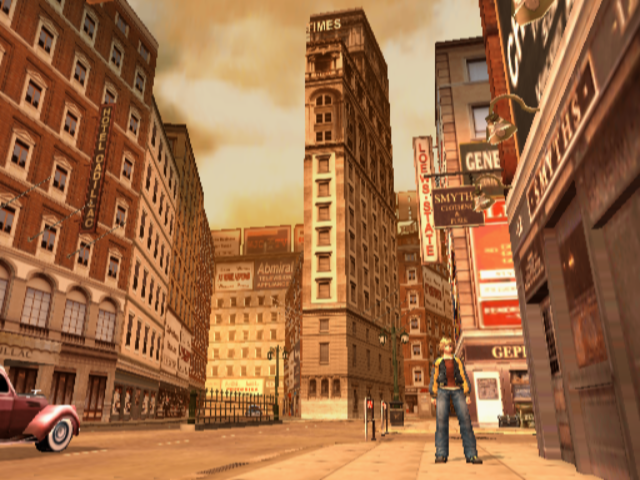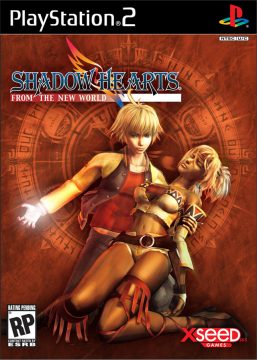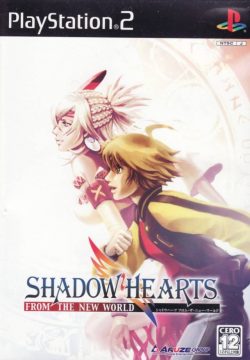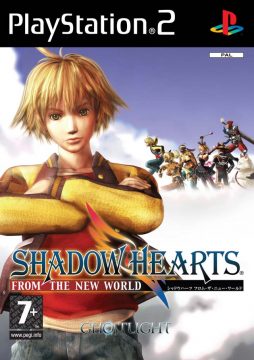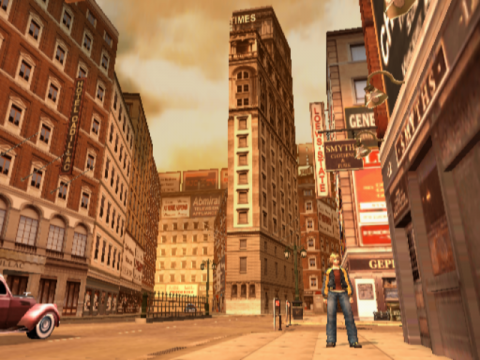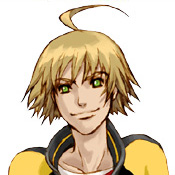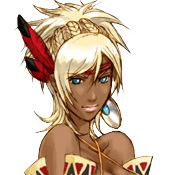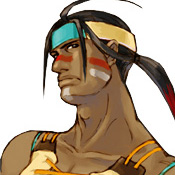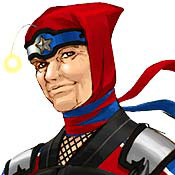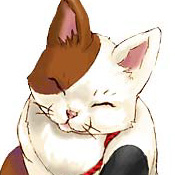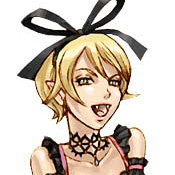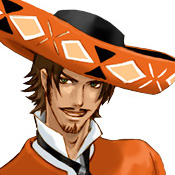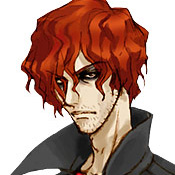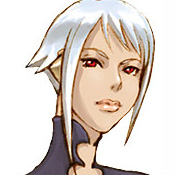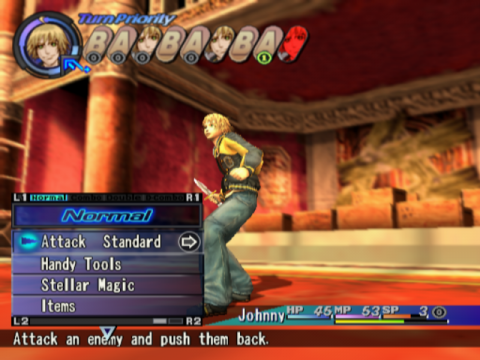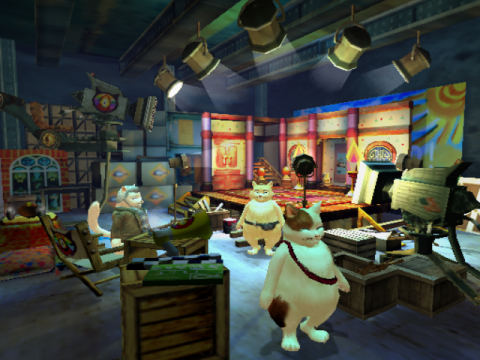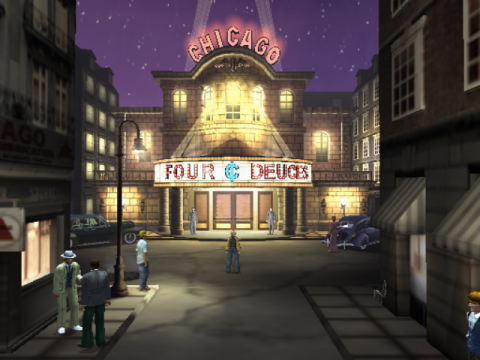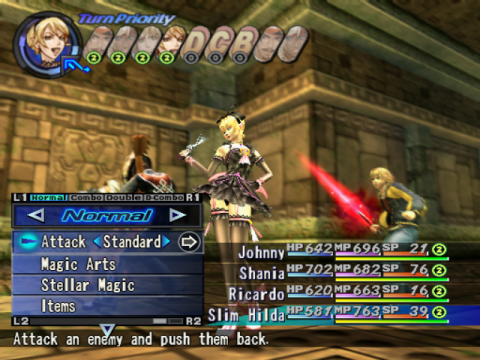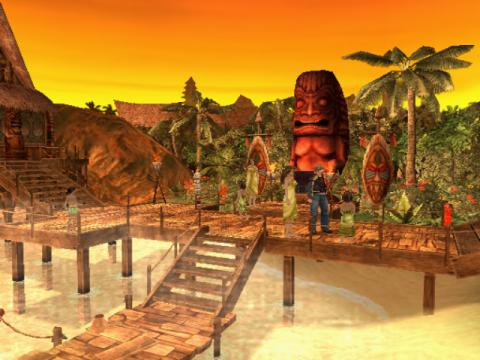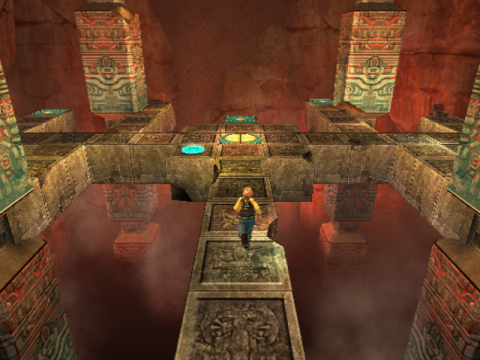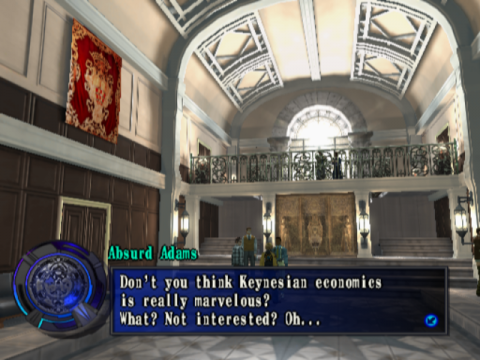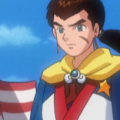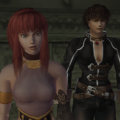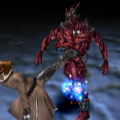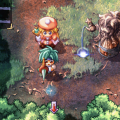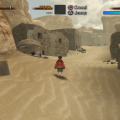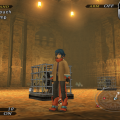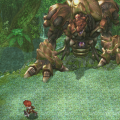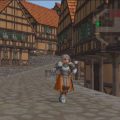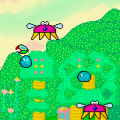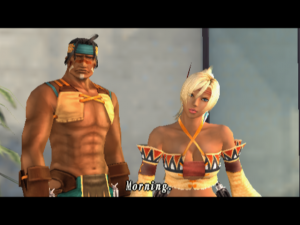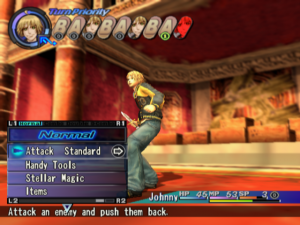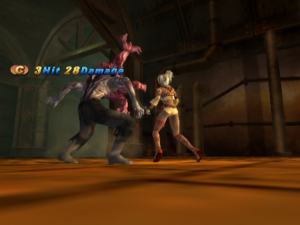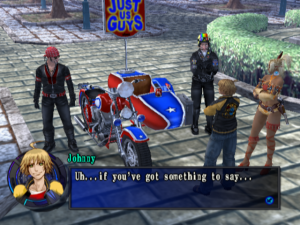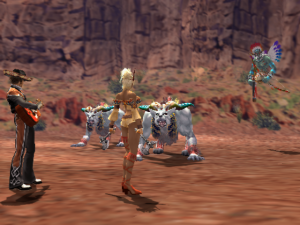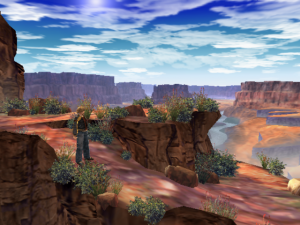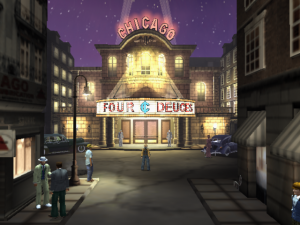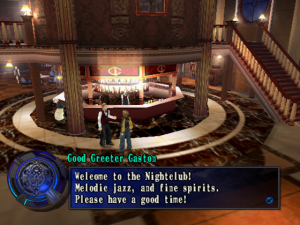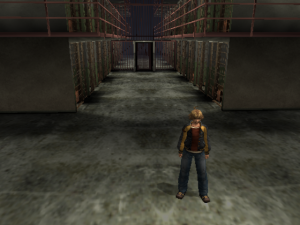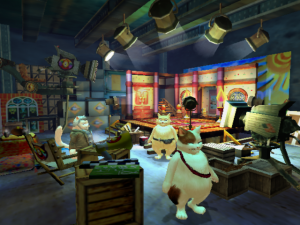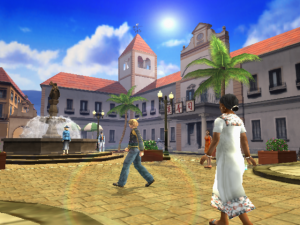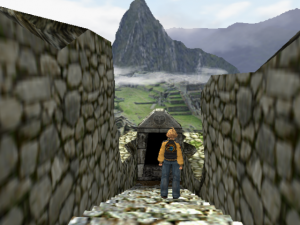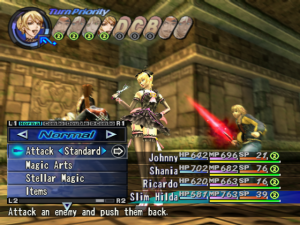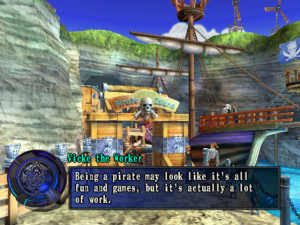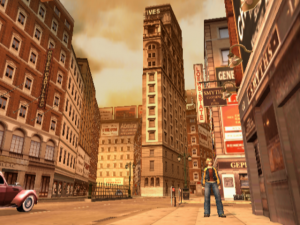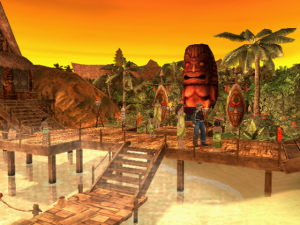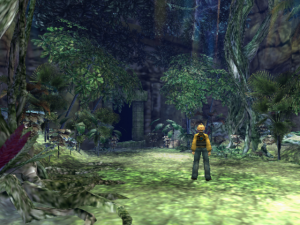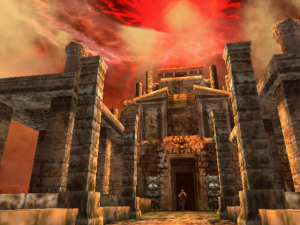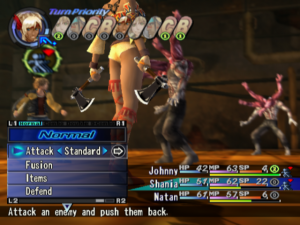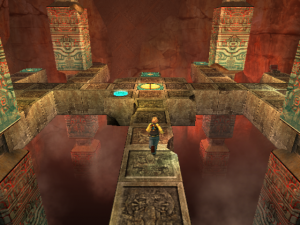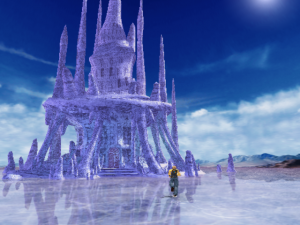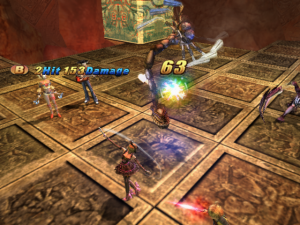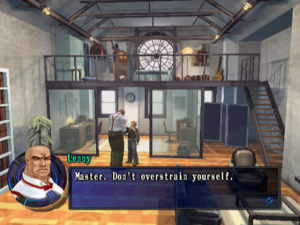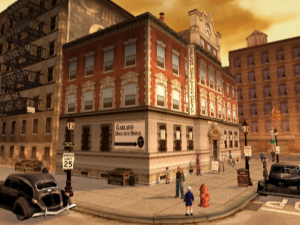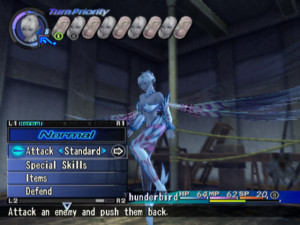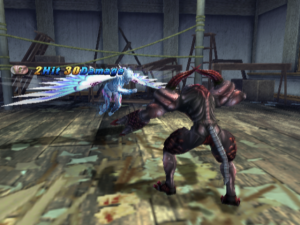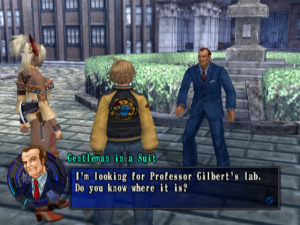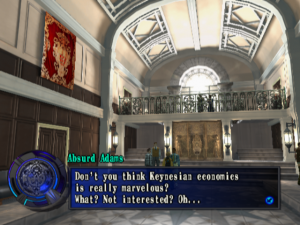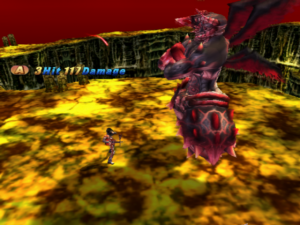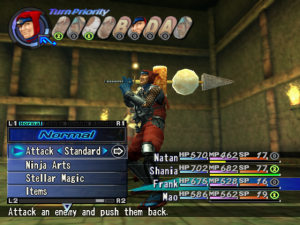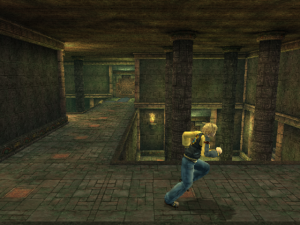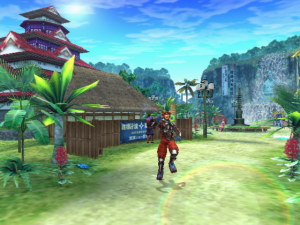- Koudelka
- Shadow Hearts
- Shadow Hearts Covenant
- Shadow Hearts: From the New World
Considering Covenant’s rather impressive surge in popularity, you might assume that the Powers That Be would be eager to chart a similar course for the next installment – as it turns out, you’d only be half right. While in many ways the third and final series entry, dubbed From the New World across all territories, does retain and build on the well-received shifts and add-ons of its immediate predecessor, from other angles it’s more accurately cast as a rather unexpected throwback to the first Shadow Hearts: all at once it’s bigger and smaller, scarier and sillier, steadier and sloppier than ever. Players can almost feel themselves being pulled in two different directions right through the controller, though thankfully things turn out decidedly better here than in the similarly-conflicted Koudelka.
As the title suggests, From the New World leaves behind the Eurasian backdrop of its ancestors in favor of the Americas, near the conclusion of the “roaring” 1920’s. All of the places you visit there are (obviously) new, as is the playable cast, though there are plentiful and distinct echoes of the past all over the place, from plain-sight cameos to veiled references that only veterans of the first two games would recognize. Anyway, due to a certain major event that transpired in Covenant, the creepy, surreal occurrences and encounters that Yuri and his posse had been dealing with in their neighborhood are now popping up all over the world; on the American continent a fresh set of faces take up the case, and handily claim the title of “wackiest team yet assembled” while they’re at it.
Characters
Johnny Garland
A 16-year old Manhattanite who’s recently started up his own solo detective agency, Johnny recently lost his father, sister and some of his memories (groan) to a terrible accident, but instead of simply inheriting the family business and moving on he decides to grope about rather haphazardly in search of answers. Thanks to this being a video game and not real life he actually finds some, as there’s more to his story than meets the eye. From the outset Johnny takes over Anastasia’s enemy-photographing duties (and can even trade the photos he takes with other shutterbugs he encounters), though later on he obtains other tools and battle aids by solving a string of puzzles and riddles.
Shania
Princess of the Garvoy, a fictional Southwestern Native American tribe, Shania serves, in a far greater capacity than Johnny, as a stand-in for Yuri, possessing some similar (but not identical) fusion abilities, hard-nosed personality traits, and a job as a fiend-hunter: her inmost motivations to this end are at least as personal as his once were, if a bit more impulse-driven. She also happens to be one of the most shamelessly fan-servicey creations in all of RPG-dom: while certainly not the first Shadow Hearts character (Yuri included, at times) to raise an eyebrow or two, her costume, fusion animations, and even the creatures she turns into are a whole new definition of boob-tastic.
Natan
An imposing Garvoy warrior who accompanies Shania as her guardian – like most “big, servile guys” in role-playing games he’s strong and mostly silent, though quite amiable beneath the taciturn exterior. He dispatches evil with a potent combination of twin pistols and traditional martial arts: in case you’re wondering whether the developers took the super-tacky Equilibrium route and dubbed his style “Gun-Fu”, yes, yes they did. At least he also gets to hunt and trap Bigfoot, the Chupacabra, and other iconic urban legends via sidequests along the way.
Frank Goldfinger
Who knew that a secret Shinobi training dojo lay hidden smack-dab in the middle of the Amazon rainforest? In the aftermath of a tragic light-plane accident, Frank stumbled upon the ninjas’ tropical headquarters and opted to remain there for a time, mastering the clan’s ancient techniques before returning home to defend his beloved USA…or so he claims, anyway. Though he utilizes ninjutsu (or something like it) instead of wrestling moves, Frank has inherited Joachim’s flashy/embarrassing penchant for poses and catchphrases, not to mention his utter lack of hesitation when it comes to granting random detritus a second life as improvised weaponry.
Mao
Just in case you were convinced that Frank’s storyline couldn’t get any weirder, meet his Master, an oversized, bipedal talking cat who also happens to be an expert “drunken fist” kung-fu practitioner (“Prohibition doesn’t apply to cats”, she reasons), one of Al Capone‘s right-hand agents, and a budding Hollywood actress to boot. Yup. Mao typically exudes serenity, keeping cool as a cucumber even under duress, but completely loses it in the face of her erstwhile pupil’s frequent screw-ups. She learns new techniques by filming “action scenes” versus other (parody-ridden and pun-loaded) feline actors, in similar fashion to Blanca’s “Wolf Bouts”.
Hildegard Valentine
Youngest of the Valentine siblings and goth-loli quotient filler, the government mistakes her for a space alien after a strange aircraft she’s aboard crashes near Roswell. Like Joachim she can take on several different physical combat forms (and harbors super-hero aspirations…with a merchandising line!), but this time you have some direct control over when they show up: unlike her brothers, Hilda doesn’t siphon life, but can instead absorb scrumptious calories directly from enemies. Thanks to her “sensitive metabolism”, Hilda’s stats, abilities, appearance, and even her personality will drastically vary depending on how many delicious kCals she’s hauling around. Quite the high-maintenance type.
Ricardo Gomez
A suave wandering mariachi musician who’s largely settled down in Chicago since meeting the woman of his dreams there…of course, the path to true love turns out to be a VERY rocky one, and Ricardo once more takes to the road in search of meaning and inspiration. Possessing a natural flair for the dramatic, his trusty guitar is chock full of hidden guns, flamethrowers, and heaven only knows what else. Ricardo’s other major combat options are his songs, each of which is actually accompanied by a unique acoustic flourish, a nice touch; many of them buff allies like Lucia’s Aroma Oils did, though some have more impressive effects.
Killer
A notorious serial murderer whose name has been all but forgotten in favor of his single, grisly moniker. Just as he’s finally been cornered by the authorities after a lengthy and violent chase, a strangely-dressed woman shows up, without a word, to slay the pursuing police officers and heal Killer’s wounds in one fell swoop. Unable to discern why or how she’s come to his aid, Killer becomes intrigued and chooses to follow after her, out of both simple necessity and a gnawing curiosity as to how he might fit into whatever she wills next.
Lady
The seemingly otherworldly woman described above; since she never speaks or changes her expression, Killer decides to simply call her “Lady” until he can find out more about her. She wanders from place to place, effortlessly meting out both death and life (with a few “minor” side effects) to and from the unwilling subjects she encounters in an almost random fashion; few, if any, know where she comes from or what her motives could be. Doesn’t quite match Shania in the “you’re making me wear WHAT?” department, but she’s in the ballpark.
Let’s start by covering the in-game systems that New World has inherited directly from Covenant. Ring customization, as you’d hope, is still here, and pretty much the same as you left it, which is hardly a bad thing. Common spells can still be distributed among a majority of your party members, but this time the process has to occur within the boundaries set by Zodiac-inspired “Stellar Charts”, which operate in similar fashion (no pun intended) to Final Fantasy X-2‘s “Garment Grids”. Each character can equip one chart at a time, and each chart, in turn, contains a set number of “nodes” which can hold one “Stellar” (spell) apiece, of specific types and strengths.
This setup more tightly restricts the raw amount and variety of magic that any individual can access at once, though you can fork over some cash to have any chart altered or upgraded; if you’re getting unwelcome recollections of the first game’s poorly-conceived “acupuncture”, rest assured that this process is nowhere near as pricey, not to mention that Stellar Charts are kept throughout the game, so you can basically pay for a handful of enhancements and adjustments at a time as you obtain more powerful magic and need a place to put it. The system is thus a smidge more limiting than the “crests” from Covenant, but just barely: you’re still pretty free to assign spells as you see fit, though you’ll need a more balanced approach than before to take full advantage.
An entirely new layer to the proceedings, specifically during battle, arrives in the form of “Stocks”, which are akin to the “super meter” found in many fighting games. As your party members give and receive damage their individual “stock” meters gradually fill up: once topped out, that fighter receives one “Stock”, and each person/cat/vampire/etc. can keep up to two at a time. Stock is required to power two special techniques. The first of these is the “Double”, which (surprise!) allows a character to perform two consecutive actions, along the lines of the “Boost” in Xenosaga (it also delays your next turn, though, so it must be used judiciously). The second is none other than the Combo, back by popular demand: unlike in Covenant, where all you needed to form combos was enough SP to last the turns necessary to set one up, a combatant must now expend one Stock to keep the chain going and send it on to the next attacker.
In exchange for this limitation, however, players are treated to several nifty advantages to help turn the tide back in their favor. For one thing, you no longer need to waste turns grouping your members together in preparation for the big assault: as soon as someone selects the “Combo” option everyone else will immediately be ready to go, and there’s no need to worry about being knocked out of formation. The game has also eliminated any guesswork involved in stringing together attack chains, and now tells you outright whether or not a selected technique will successfully hit an enemy before you confirm it. Also, if you decide to change tactics and cancel a combo halfway through, there’s no need to whiff an attack on purpose: the acting character can simply choose to not spend any Stock and serve as the “finisher” for the sequence.
Even better, if your Stocks are maxed out, you can blow it all at once to go straight from a Double right into a Combo, which can translate into huge damage potential if the party has a lot of energy saved up. Beware, however, as your enemies can “Stock” just like you can, and if you’re not careful they can dish out the pain just as quickly – to counter this your characters’ “Hard Hit” attack variation now sacrifices half a Stock to deplete an enemy’s Stock by one (and an “Endure” defensive maneuver replaces Covenant‘s “Resist” to prevent the same from being wrought upon you). When all’s said and done, New World requires players to act more discerningly when planning a major offensive even as it widens and spices up their options: in so many words, the already-entertaining combat system from Covenant is now even more fun to play around with.
From here, we move on to the ways in which New World recalls the series’ more humble beginnings. For starters, towns and dungeons are once again relatively compact and straightforward affairs, just a tad more expansive in nature than the original’s. Interestingly, amidst this simplification of sorts the developers have finally decided to include a full-fledged map; while it almost seems like overkill at this point, at least you’re most always certain to know exactly where you’re going. Your journey from beginning to end has also been “downsized” somewhat; it’s back to a single disc, with a total runtime settling somewhere in between those of the two previous games. To balance things out the challenge level has been beefed back up a bit: while New World isn’t as taxing as the initial Shadow Hearts could be, it’s a noticeably steeper hill to climb than Covenant.
The series’ semi-dormant horror influences have also reasserted themselves with panache: if you’ve been missing those most nightmarish monster designs from the olden days, rest assured that there are lots of them back in town for your, um, pleasure. More than a few of your destinations eagerly follow suit: right at the outset you’re tasked with scouting out the decrepit depths of a condemned, decaying theater, as a scratchy, eerie record of Mozart’s “Oh smania! Oh furie!” from Idomeneo groans somewhere off in the distance. Not to be outdone , of course, the developers’ often-bizarre sense of humor has simultaneously reached its apex: not long after you narrowly escape the abandoned performance hall you’ll happen upon a pirate hideout in the Caribbean…a candy-colored pirate hideout set up like a cheesy amusement park attraction (oh, and the storied Captain is an 8-year-old girl). Whether this off-kilter mishmash of “aesthetic sensibilities” registers as kookily endearing or jarringly repugnant is largely a matter of taste…or possibly a lack thereof.
Graphics-wise, New World is pretty much on a par with Covenant. A handful of detailing touch-ups and other improvements have been applied, but by and large it’s about the same quality as its precursor, i.e. still looking good, but a little bit of the luster has worn off a year or two later. That being said, a newfound visual strength can be found in the game’s increased emphasis on presentational variety. While some of the first two titles’ people and places could start to blur together after awhile, New World compensates for its more modest running time by treating players to something fresh just about everywhere they go: the afternoon sun in New York feels decidedly different from seedy nighttime Chicago, and the ancient ruins at Chichen Itza are easily distinguishable from those at Machu Pichu and Vilcabamba.
From a shamelessly America-centric perspective, it must be noted, there’s also the added bonus of seeing homebound landmarks and legends strangled within an inch of their lives – while the rewritten history and other assorted silliness in Eurasia was certainly fun to experience from a distance, it’s a whole new ballgame when you get to see historical figures and other sacred cows straight out of your middle school textbooks given their own WTF-worthy once-overs. Who knew, for instance, that ol’ Scarface was such a stand-up guy beneath it all, and that he and Eliot Ness actually embodied a classic “friendly rivalry” of sorts? Or that H.P. Lovecraft, whose eponymous sci-fi/horror style has left such deep and evident marks on the series, ran a monster-battling arena on the side (well, that one’s actually kind of plausible)? Only Sakura Wars: So Long My Love and Metal Wolf Chaos beat New World on this front.
Series stalwart Yoshitaka Hirota returns to headline the soundtrack once more, with former sound effects maven Tomoko Imoto lending a hand, but their more illustrious Square-affiliated partners from previous games are MIA. Perhaps inevitably, then, while their songs for this project exude appropriate touches, both country and cosmopolitan, to reflect the new time and place, the score most closely recalls the spirit of the first Shadow Hearts: warbling vocals, rattling percussion, and a smorgasbord of exotic instrumental flashes abound, especially once you’ve set foot in South America. The localizations’ English voice acting is once again solidly executed, save a handful of rough spots.
At this point some outside observers might be wondering, off the cuff, why so many players cite Covenant as their favorite Shadow Hearts game over New World; on paper, at least, the third game retains the “core” improvements which made the second such a success, whilst both buffing in an additional layer of polish and paying due tribute to the distinctive approach that got everyone’s attention back in the original. So what’s the catch? Well, you might say that the game experienced as a whole is a bit less than the sum of its admittedly impressive individual parts. To wit, each of the cast members is entertaining on his or her own, but the whole lot, heroes and villains alike, never truly gels into the engrossing, intermingling ensemble that Covenant‘s did. This aura emanates particularly strongly from many of the returning NPC guests, who come across as somehow “gutted” for their walk-ons here.
In the same vein, New World‘s locales all make for attractive places to visit, but rarely feel like pieces of anything more significant; many have a decided “hey, why not go here?” air about them when they appear on the map, as the overarching plot makes little effort to tie things together in any sort of focused, deliberate manner. On another wavelength, of course, there’s New World‘s unflinching embrace of sparkly rainbow weirdness in all its forms, which undoubtedly caught newer fans, brought up on the somewhat more inclusive direction taken by Covenant, off guard: the replacement of beloved protagonist Yuri with “Tidus’ kid brother” certainly didn’t help, not to mention the accurate, if rather unfair, criticism that the third game in the series wasn’t as big a “leap forward” as the second.
None of this, of course, is to say that From the New World isn’t worth playing – it remains a fine series entry, in some respects the best of the bunch, and a great RPG, period. For the majority, however, it just doesn’t quite live up to its pedigree, and ends up taking a back seat to its elder sibling. Shortcomings notwithstanding, New World rated not one but two special retail editions in Japan. Early adopters could shell out for a “Premium Box”, which stuffs in a “special sound” music CD (which includes the bonus tracks from the “Director’s Cut” of Shadow Hearts II), DVD, t-shirt, keychain light, cell phone straps, and notebook (styled to resemble one of the game’s more infamous quest items, rendering it nigh-unusable in public settings). Second-print buyers could instead snag a “Starter Pack”, packaged with a pair of extra guidebooks.
In the real-life “New World”, however, Midway had by now jumped ship as publisher. Thankfully, Xseed picked up the slack for them in the USA and Ghostlight took over in Europe, though these smaller outfits couldn’t conjure up much in terms of extras, and New World‘s generally diminished reception compared to Covenant didn’t exactly grease those wheels. Importers can instead partake of the usual complement of artbooks and the like, plus various shop-specific pre-order items (concept art booklet, phone card, alarm clock, pencil board, media disc, etc.) and one last 2-CD soundtrack: there’s also “Near Death Experience”, a stand-alone album featuring remixes of songs from all three Shadow Hearts games, released around the same time. There was also a demo included with an issue of Official PlayStation Magazine.
